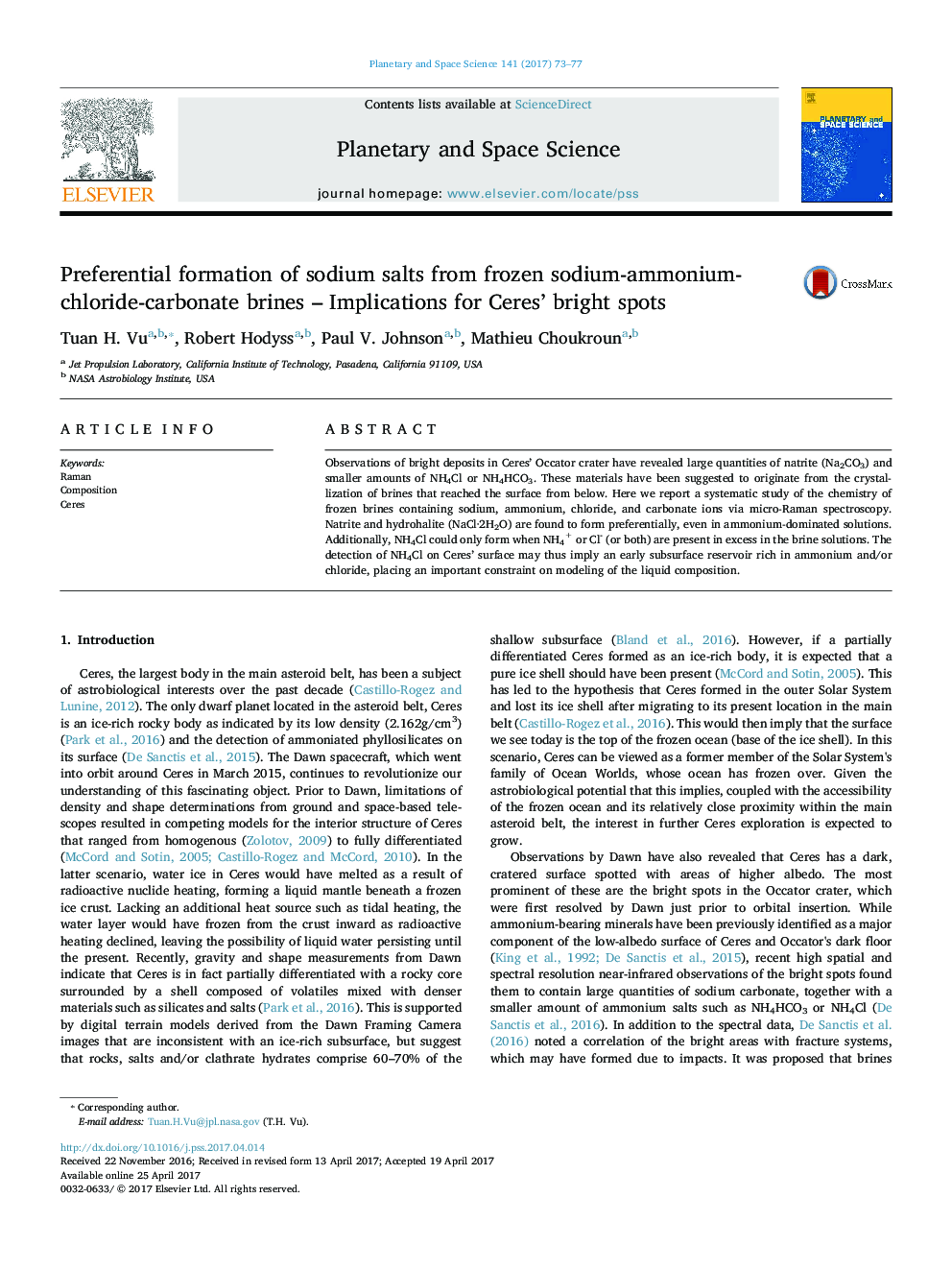| Article ID | Journal | Published Year | Pages | File Type |
|---|---|---|---|---|
| 5488032 | Planetary and Space Science | 2017 | 5 Pages |
Abstract
Observations of bright deposits in Ceres' Occator crater have revealed large quantities of natrite (Na2CO3) and smaller amounts of NH4Cl or NH4HCO3. These materials have been suggested to originate from the crystallization of brines that reached the surface from below. Here we report a systematic study of the chemistry of frozen brines containing sodium, ammonium, chloride, and carbonate ions via micro-Raman spectroscopy. Natrite and hydrohalite (NaCl·2H2O) are found to form preferentially, even in ammonium-dominated solutions. Additionally, NH4Cl could only form when NH4+ or Cl- (or both) are present in excess in the brine solutions. The detection of NH4Cl on Ceres' surface may thus imply an early subsurface reservoir rich in ammonium and/or chloride, placing an important constraint on modeling of the liquid composition.
Keywords
Related Topics
Physical Sciences and Engineering
Earth and Planetary Sciences
Geophysics
Authors
Tuan H. Vu, Robert Hodyss, Paul V. Johnson, Mathieu Choukroun,
